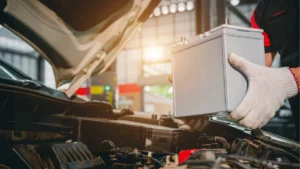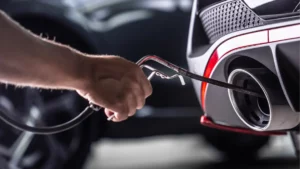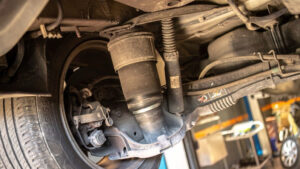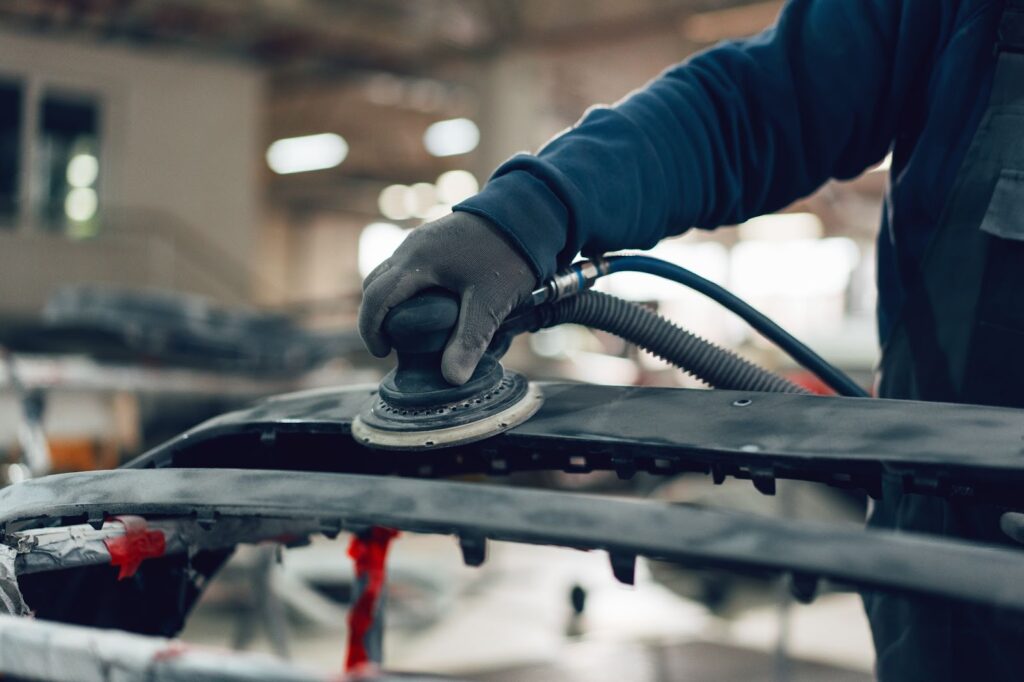
Auto frame straightening is pivotal in restoring vehicles to their former glory after collisions or accidents.
Essentially, auto frame straightening involves the realignment of a vehicle’s chassis or frame, ensuring that it returns to its original structural integrity.
To understand how this process works, envision a skilled technician using state-of-the-art equipment to manipulate and reshape the vehicle’s frame carefully.
Precision is paramount as they analyze measurements, assess damage, and employ specialized tools to coax the frame back into its intended position.
Let’s explore the depths of auto frame straightening and unravel the complexities of the techniques and technologies that contribute to the seamless restoration of vehicles.
What Is Car Frame Straightening?
Car frame straightening is a pivotal process in the realm of automotive restoration, primarily addressing structural damage resulting from collisions or accidents.
The vehicle’s frame, or chassis, serves as its structural backbone, and when compromised, it can affect the overall safety, performance, and aesthetic appeal.
Now, what is considered frame damage on a car? Frame straightening is the specialized technique employed to restore the frame to its original shape and alignment.
During this meticulous procedure, skilled technicians utilize advanced equipment to assess the extent of the damage and carefully manipulate the frame back into its intended position.
The goal is not just cosmetic improvement but ensuring that the vehicle’s structural integrity is reinstated. Car frame straightening is crucial in bringing damaged vehicles back to roadworthiness, contributing to both safety and the automobile’s longevity.
How Does Frame Straightening Work?
Frame straightening is a nuanced process that combines precision, technology, and expertise to effectively address structural misalignments.
The first step involves a comprehensive assessment, where technicians use advanced measuring tools to identify deviations from the manufacturer’s specifications. This precise analysis guides the subsequent steps in the straightening process.
Specialized hydraulic equipment and computerized systems are then employed to gently manipulate the frame.
Technicians strategically apply controlled force to specific points, gradually bringing the frame back to its original specifications. Throughout this process, constant measurements and adjustments are made to ensure accuracy.
Using a frame straightening machine isn’t a one-size-fits-all procedure; it is tailored to the unique dimensions and structural characteristics of each vehicle.
Skilled craftsmanship and cutting-edge technology make frame straightening a crucial aspect of automotive repair, allowing damaged vehicles to undergo a transformative journey from collision-worn to road-ready.
When Does a Car Require Frame Straightening?
Determining when a car needs frame straightening is crucial for timely and effective automotive repair. While minor dings and dents can often be addressed through conventional bodywork, certain signs indicate the necessity for frame straightening.
A vehicle should undergo frame straightening if it has been involved in a significant collision, experienced a substantial impact, or shows signs of misalignment affecting its overall performance and safety.
Professional assessment by skilled technicians is essential to accurately gauge whether auto frame repair is required, ensuring that structural integrity is restored.
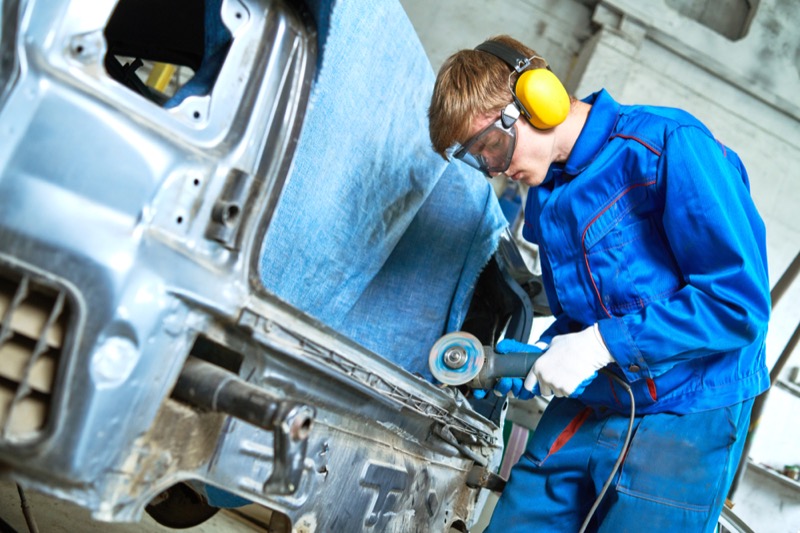
What Constitutes Serious Frame Damage?
Serious frame damage can result from various incidents, including high-impact collisions, accidents, or even certain types of severe weather conditions. Identifying the signs of serious frame damage is paramount for comprehensive vehicle diagnostics.
Visual cues such as visible bends, twists, or asymmetry in the frame are clear indicators. Additionally, issues like uneven tire wear, handling problems, or persistent alignment difficulties may suggest underlying frame damage.
Advanced diagnostic tools and thorough inspections by experienced professionals are instrumental in determining the extent of frame damage and whether frame straightening is necessary for the vehicle’s safe and optimal functioning.
What Parts of a Frame Can Be Damaged?
A car’s frame is its structural backbone, and when subjected to accidents or collisions, various components can bear the brunt of the impact. Understanding what parts of a frame can be damaged is essential for comprehensive automotive repair. In this exploration, we delve into specific frame elements, examining the intricacies of their construction and the potential consequences when damage occurs.
Ladder Frame
The ladder frame, a classic design found in trucks and some SUVs, consists of two parallel rails joined by cross members. Damage to this frame can compromise the vehicle’s structural integrity, leading to misalignment and affecting overall performance. Frame straightening is crucial to realign the ladder frame, ensuring the vehicle maintains its original strength and stability.
Unibody Frame
Unlike the ladder frame, unibody construction integrates the vehicle’s body and frame into a single unit. When a unibody frame sustains damage, the impact can extend beyond visible dents, impacting structural rigidity. Frame straightening for a unibody involves precision adjustments to restore the frame’s original shape, preserving the vehicle’s safety and handling characteristics.
A, B, and C Pillars
The A, B, and C pillars are integral to a vehicle’s overall structural design, supporting and enhancing rigidity. Damage to these pillars can compromise the vehicle’s safety, affecting its ability to withstand impact. Addressing issues with the pillars through frame straightening is essential for ensuring the entire vehicle’s structural integrity.
Apron
The apron at the front of the vehicle is vital in supporting the fenders and other front-end components. Damage to the apron can result in misalignment and compromise the vehicle’s aesthetic appeal. Frame straightening for the apron involves precision adjustments to ensure proper alignment and structural integrity.
Core Support
The core support, often called the radiator support, provides a foundation for crucial components like the radiator and headlights. Damage to the core support can affect the alignment of these components, leading to issues with cooling and lighting systems. Frame straightening for the core support aims to restore proper alignment and functionality.
Firewall
The firewall is a barrier between the engine compartment and the passenger cabin. Damage to the firewall can compromise the safety and integrity of the vehicle. Frame straightening for the firewall involves meticulous adjustments to restore the protective barrier, maintaining the separation between the engine and passenger areas.
Floor Pan
The floor pan provides the base for the vehicle’s interior, supporting seats and contributing to structural integrity. Damage to the floor pan can lead to issues with seating stability and compromise the vehicle’s overall strength. Frame straightening for the floor pan involves precision adjustments to restore its original structure, ensuring safety and comfort.
Hood
The hood is a cosmetic component and contributes to the vehicle’s aerodynamics and engine protection. Damage to the hood can affect these functions and compromise the overall aesthetics. Frame straightening for the hood involves careful adjustments to restore it to its proper alignment, preserving both form and function.
Quarter Panel
The quarter panel is a structural and aesthetic component that covers the area between the rear door and trunk. Damage to the quarter panel can impact the vehicle’s visual appeal and structural integrity. Frame straightening for the quarter panel involves meticulous adjustments to ensure proper alignment and restore the vehicle’s symmetry.
Rear Support
The rear support, positioned at the back of the vehicle, contributes to structural integrity and supports various rear-end components. Damage to the rear support can affect the alignment of these components, leading to issues with the vehicle’s overall stability. Frame straightening for the rear support involves precise adjustments to restore its original position and functionality.
Rocker Panel
The rocker panel, running along the sides of the vehicle between the wheel wells, provides structural support and enhances the vehicle’s aesthetics. Damage to the rocker panel can compromise the vehicle’s overall strength and appearance. Frame straightening for the rocker panel involves careful adjustments to address misalignments and restore structural integrity.
Strut Tower
The strut tower is a critical component that supports the vehicle’s suspension system. Damage to the strut tower can affect the vehicle’s handling and stability. Frame straightening for the strut tower involves precision adjustments to ensure proper alignment, preserving the integrity of the suspension system and overall driving performance.
Unirail
The uni rail, part of the vehicle’s frame structure, is crucial in maintaining overall rigidity. Damage to the uni rail can affect the structural integrity of the vehicle. Frame straightening for the uni rail involves targeted adjustments to bring it back to its original specifications, ensuring the vehicle’s strength and stability are maintained.
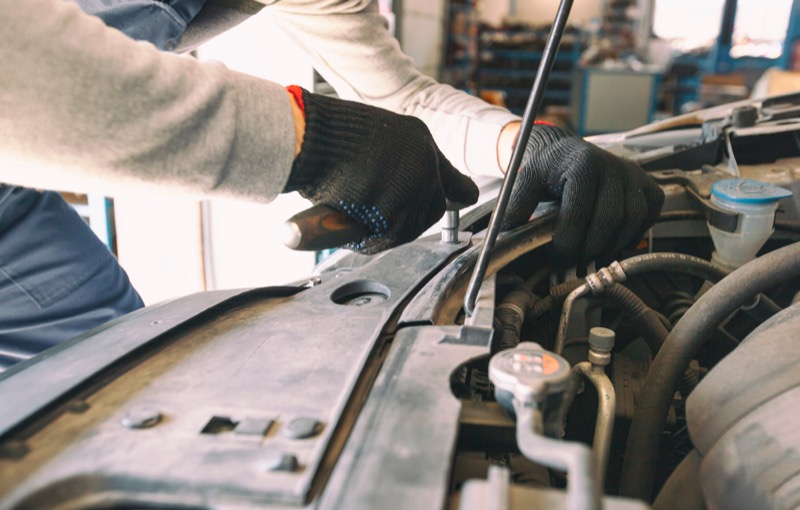
How much does a frame straightener cost?
Car frame damage repair cost varies based on factors such as its type, features, and brand.
Entry-level hydraulic frame straighteners may start at a few thousand dollars, while more advanced and computerized models can range from $10,000 to $50,000 or more. Additionally, professional installation and training costs should be considered. It’s crucial to weigh the initial investment against the long-term benefits of precise frame straightening in vehicle restoration.
What Happens if I Don’t Get My Bent Frame Straightened?
Neglecting to address a bent or misaligned frame can have serious consequences for your vehicle. Structural integrity is compromised, leading to handling issues, increased wear on other components, and potential safety hazards. Unaddressed frame damage may result in uneven tire wear, poor alignment, and difficulties controlling the vehicle.
Additionally, it can diminish the vehicle’s resale value. Getting your bent frame straightened promptly is essential for preserving your vehicle’s overall performance, safety, and longevity.
Is My Car Safe to Drive After Frame Straightening?
After the precision of frame straightening, the lingering question is the safety of your vehicle on the road. Dive into the essential considerations, ensuring your car is restored and secure for your journeys.
How Do I Find a Qualified Frame Straightening Expert in Houston?
In the vast automotive landscape of Houston, finding a skilled frame straightening expert is crucial.
Explore the following steps to connect with a professional who can seamlessly restore your vehicle’s structural integrity:
- Research and Referrals. Conduct thorough research on local auto body shops and frame straightening services in Houston. Seek recommendations from friends, family, or online reviews to identify reputable experts with a proven track record in precise frame straightening.
- Certifications and Training. Ensure that the frame straightening expert possesses relevant certifications and training. Look for technicians trained to handle the latest equipment and auto body frame straightening techniques, ensuring that your vehicle is in the hands of qualified professionals.
- Facility Inspection. Visit the facility to assess its cleanliness, organization, and the quality of equipment used. A well-equipped and organized workshop is indicative of a professional operation. This step provides insights into the dedication of the expert to their craft.
By aligning your search with these considerations, you can confidently entrust your vehicle to a qualified frame straightening expert in Houston, ensuring optimal restoration and the safety of your future drives.
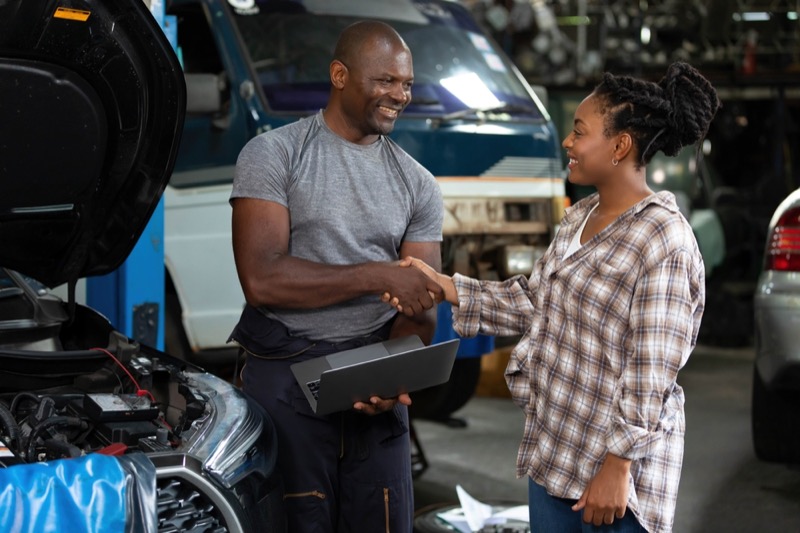
Ensuring Safety and Reliability: Navigating Post-Frame Straightening Considerations
From professional inspections to alignment verification and vigilant test-driving, ensuring the structural integrity and safety of your vehicle is the key to confidently hitting the road after the frame straightening process.
Partnering with experts such as Status Automotive & Collision in Houston, TX, adds an extra layer of assurance to your journey.
Renowned for their commitment to precision and safety, Status Automotive & Collision brings a wealth of expertise to frame straightening in Houston.
Their certified technicians use state-of-the-art equipment, ensuring that your vehicle is in the hands of qualified professionals. By choosing Status Automotive & Collision, you not only ensure that your car looks flawlessly restored but also gain the peace of mind that it is genuinely roadworthy and secure.
Drive with confidence, knowing that your vehicle has received top-tier care from the experts at Status Automotive & Collision in Houston. Call us today!

